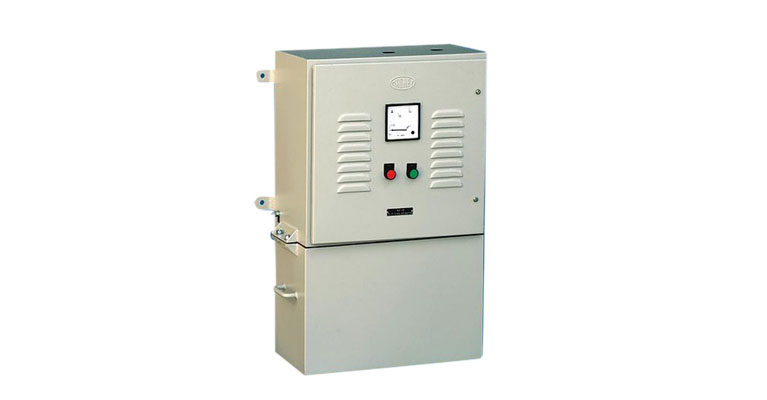ATS/Slip Ring Starter
Products || ATS/Slip Ring Starter

ATS/Slip Ring Starter
An Auto transformer starter uses an auto transformer to reduce the voltage applied to a motor during start. The auto transformer may have a number of output taps and be set-up to provide a single stage starter, or a multistage starter. Typically, the auto transformer would have taps at 50%, 65% and 80% voltage, enabling the motor to be started at one or more of these settings.
The slip ring induction motor has two distinctly separate parts, one is the stator and other is the rotor. The stator circuit is rated as same in the squirrel cage motor, but the rotor is rated in frame voltage or short circuit current. These motors are usually started with full line voltage applied across its terminals. As these motors have external resistance connected to its rotor circuit, the value of starting current is adjusted or kept minimum, by increasing the resistance of the rotor circuit. This external resistance can be assumed to be a form of rheostat, connected in star, thus kept at maximum when the motor starts and gradually cut-out as the motor gathers speed. Increasing the rotor resistance, not only reduces the rotor current, but the stator current too. This implies that the starting current of the motor is reduced when an external resistance is added in the rotor circuit. Thus because of this, the starting torque is increased due to the improvement in power factor.
The controlling rheostat may be of either stud or contactor type. It may be either hand operated or sometimes automatic. The 3-phase supply to the stator has a switching contactor along with over-load and no or low-voltage protective devices. There might be also an interlock provided to ensure the proper sequential operation of the control gear and starting devices.
- Economical with faster payback periods.
- Ability to maintain a constant high power factor.
- Eliminates low power factor penalties levied by EB.
- Reduces the KVA demand charges.
- Improves efficiency of the system by reducing losses.
- Prevents leading power factor in the installation during low load conditions
